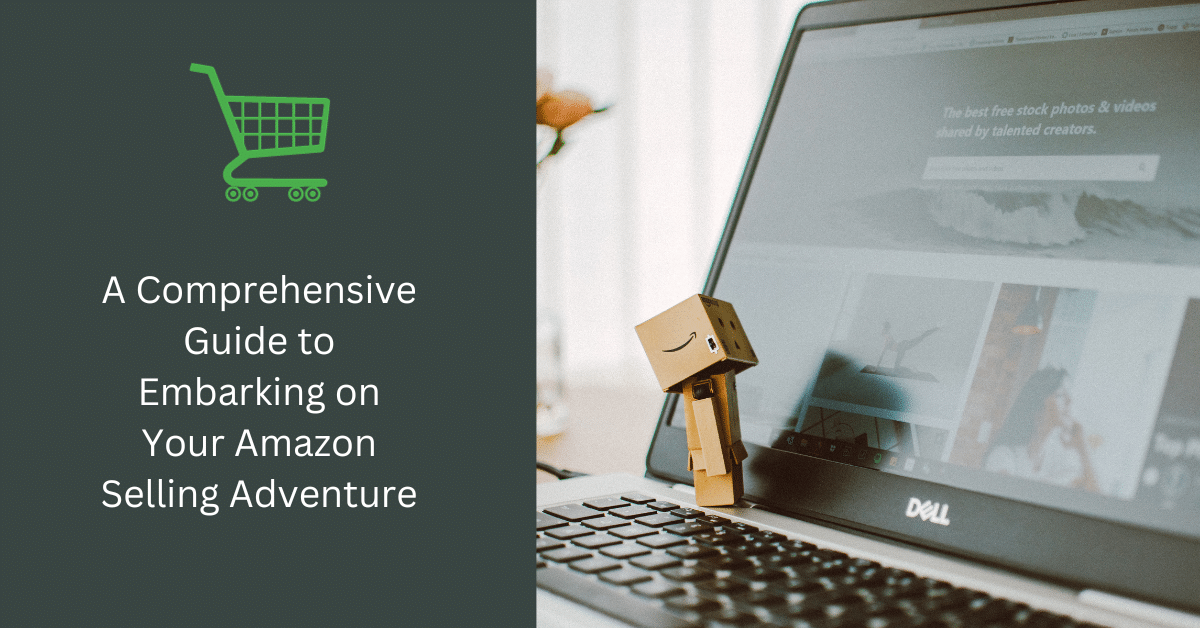
Venturing into the world of e-commerce and seeking a consistent income stream online? Consider Amazon, a dominant platform that offers immense opportunities for aspiring entrepreneurs. This extensive guide is designed to navigate you through the fundamental steps in initiating your Amazon selling journey. From complete novices to those aiming to broaden their e-commerce enterprise, this guide provides a detailed roadmap for all.

Amazon FBA vs. Amazon FBM
Understanding the two main models of selling on Amazon is paramount before delving into product selection and sourcing:
Amazon FBA (Fulfilled by Amazon)
Overview:
- A streamlined approach to selling.
- Products are sent to Amazon’s warehouses.
- Amazon handles storage, shipping, and customer service.
Pros:
- More time to focus on sourcing profitable products.
- Less hands-on work.
Amazon FBM (Fulfilled by Merchant)
Overview:
- Sellers are in charge of storage, shipping, and customer service.
Pros:
- Greater control over the logistics.
- Potentially higher profit margins.
Cons:
- Time-intensive.
- Requires more effort and organization.
Categories of Profitable Products
To thrive as an Amazon seller, pinpointing profitable products is crucial. Below are three primary categories to ponder upon:
1. Arbitrage Products:
- Definition: Buying discounted items and selling them at a higher price.
- Pros: Easily accessible, minimal initial investment.
- Cons: Limited scalability.
2. Wholesale Products:
- Definition: Bulk purchasing and reselling on Amazon.
- Pros: Scalability and potentially higher profits.
- Cons: Substantial upfront investment.
3. Private Label Products:
- Definition: Creating and selling your branded products.
- Pros: High profitability and brand building.
- Cons: Significant investment and effort in manufacturing, marketing, and branding.
Setting Up Your Amazon Account
Embarking on your Amazon journey necessitates setting up an Amazon seller account. Follow these comprehensive steps for a smooth initiation:
- Navigate to the relevant Amazon seller portal for your location.
- Choose between a free individual plan or a paid professional plan.
- Create or log in to your Amazon account.
- Provide the required information and verify your identity.
- Select your entity type and adhere to the provided setup guide.
Discovering Profitable Products
Finding Arbitrage Products:
- Visit local retailers or online clearance sections.
- Compare prices on Amazon.
- Utilize tools like Profit Tool for identifying profitable arbitrage deals.
Finding Wholesale Products:
- Search for wholesalers online.
- Request product catalogs.
- Compare products with Amazon listings.
- Establish relationships with wholesalers.
Analyzing Product Viability
Key Factors:
- Best Seller Rank (BSR): Opt for products with a BSR below 100,000.
- Review Consistency: Ensure the product receives steady reviews, reflecting continuous sales.

Conclusion
Embarking on your Amazon selling journey, though potentially rewarding, demands diligent research, product selection insight, and a profound understanding of your target market. As you accumulate experience and augment your portfolio, opportunities for growth and optimization in your Amazon e-commerce business will unfold.







Comments (0)
There are no comments here yet, you can be the first!